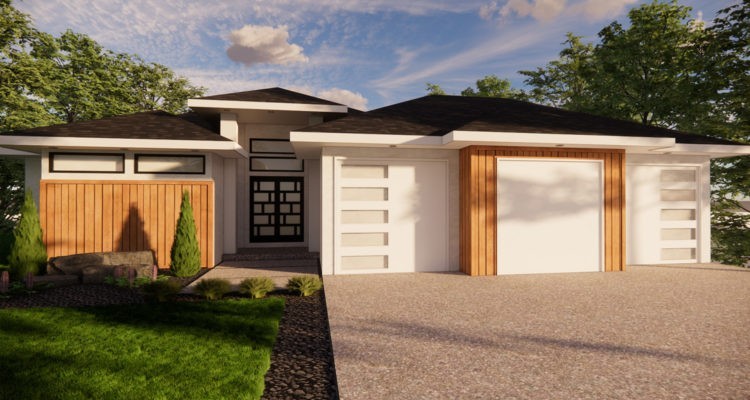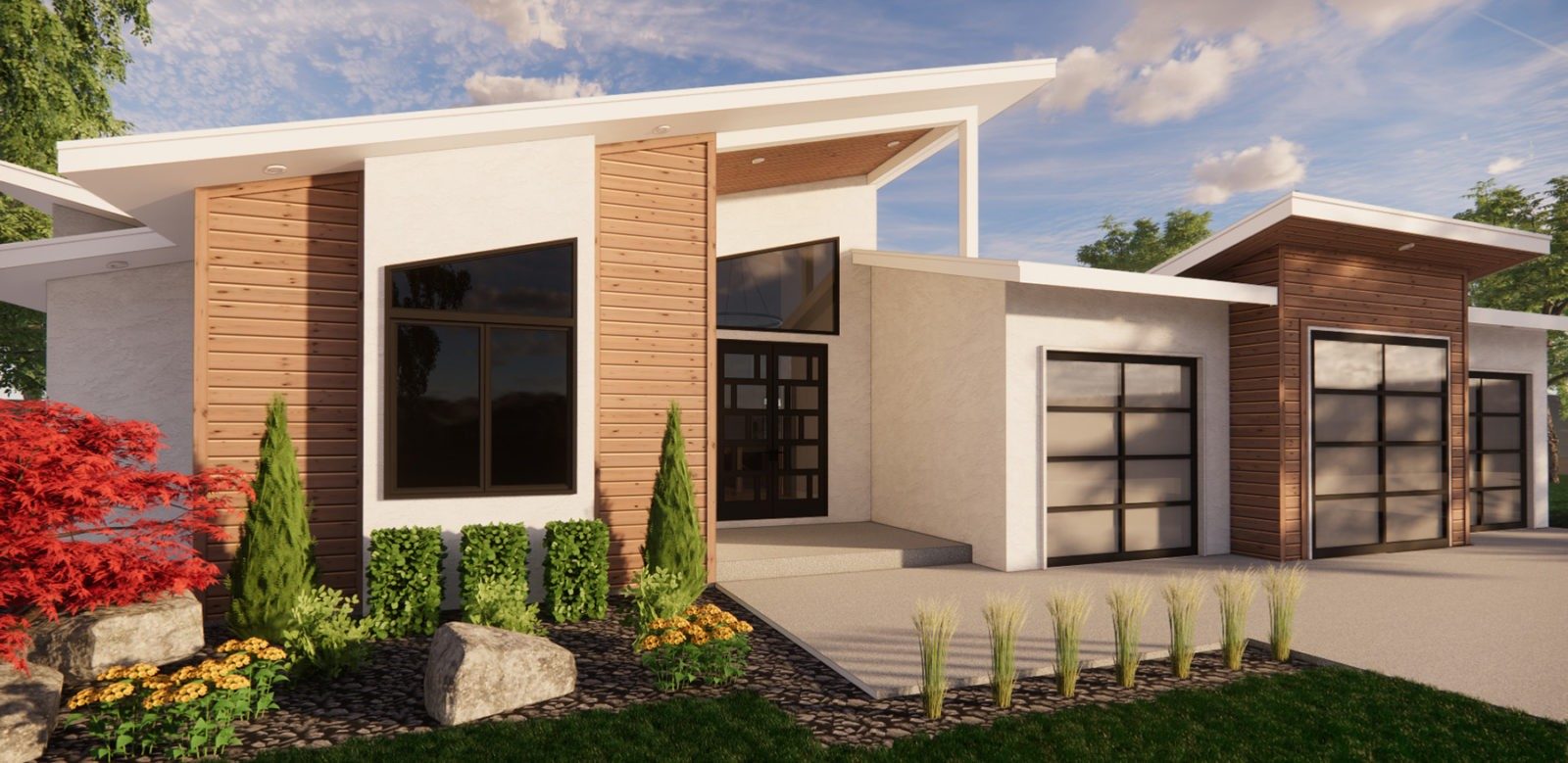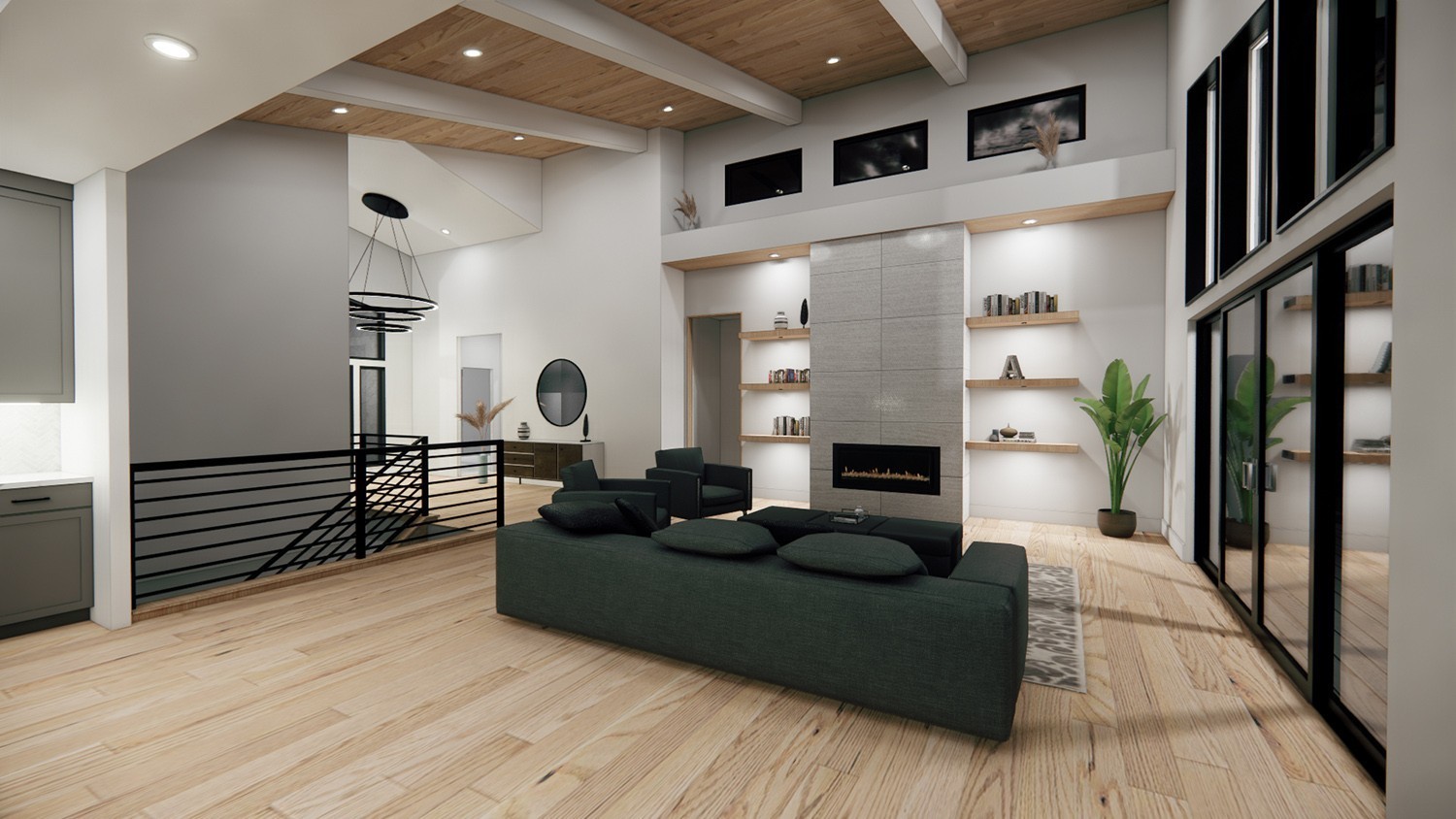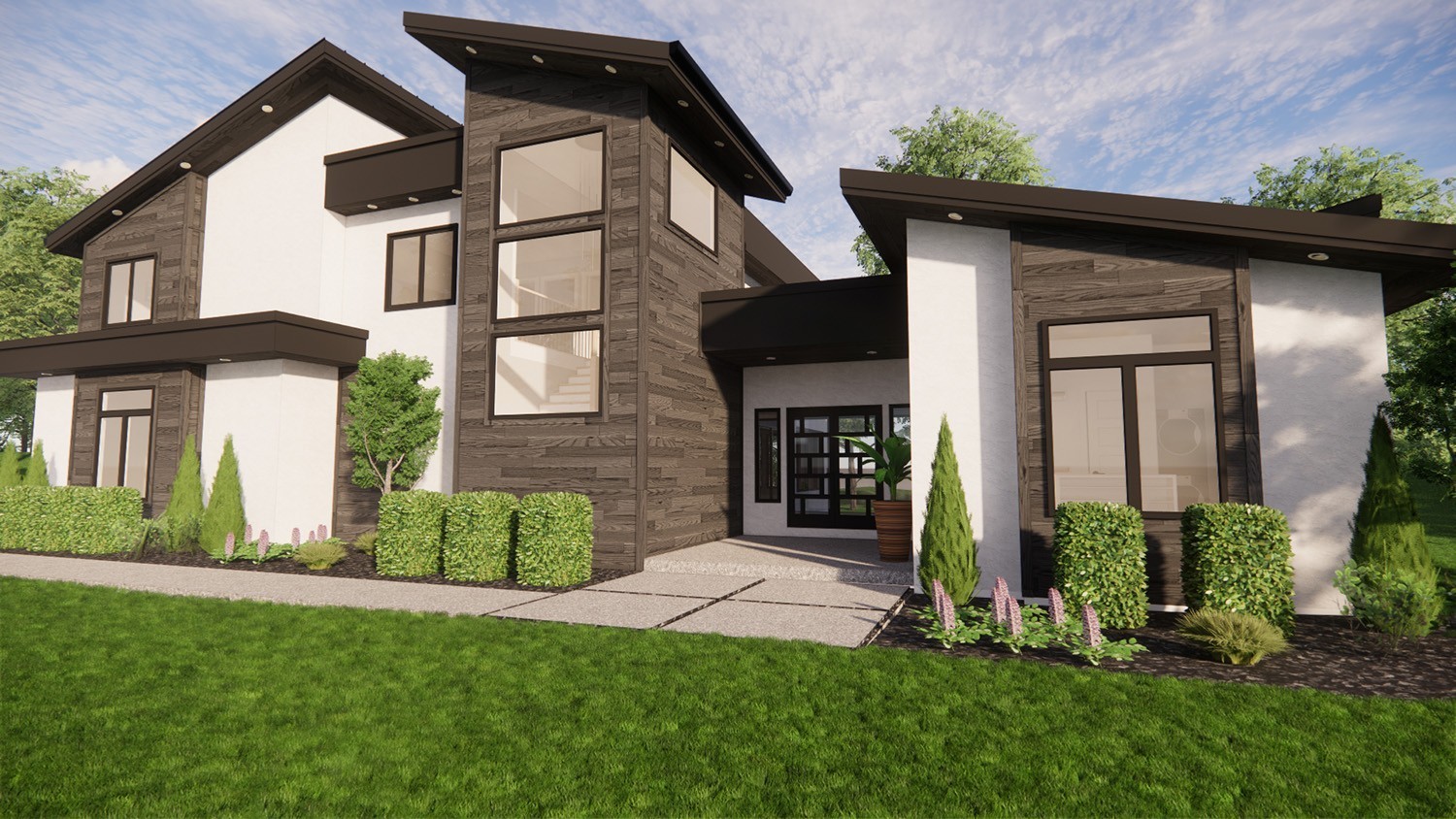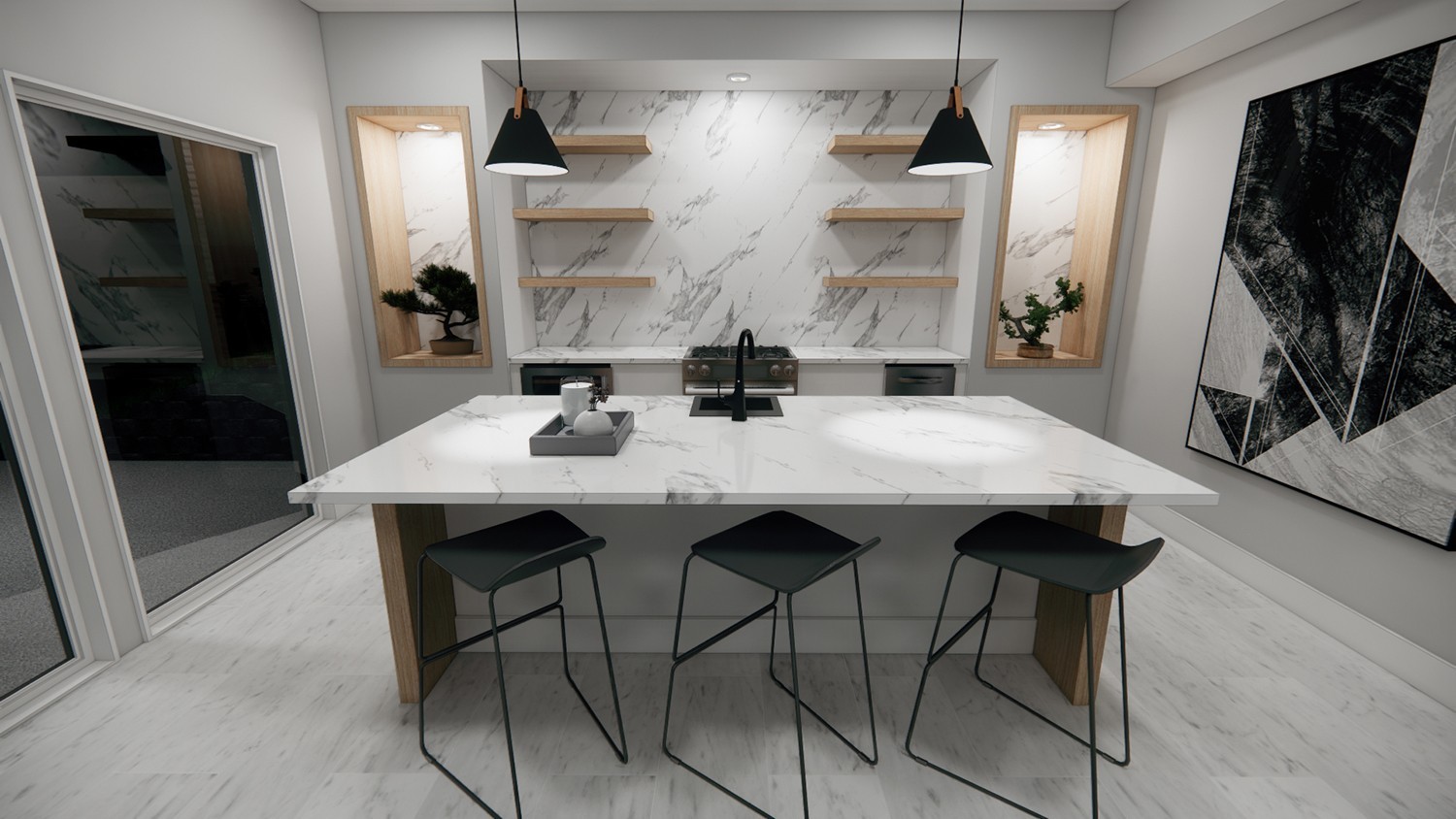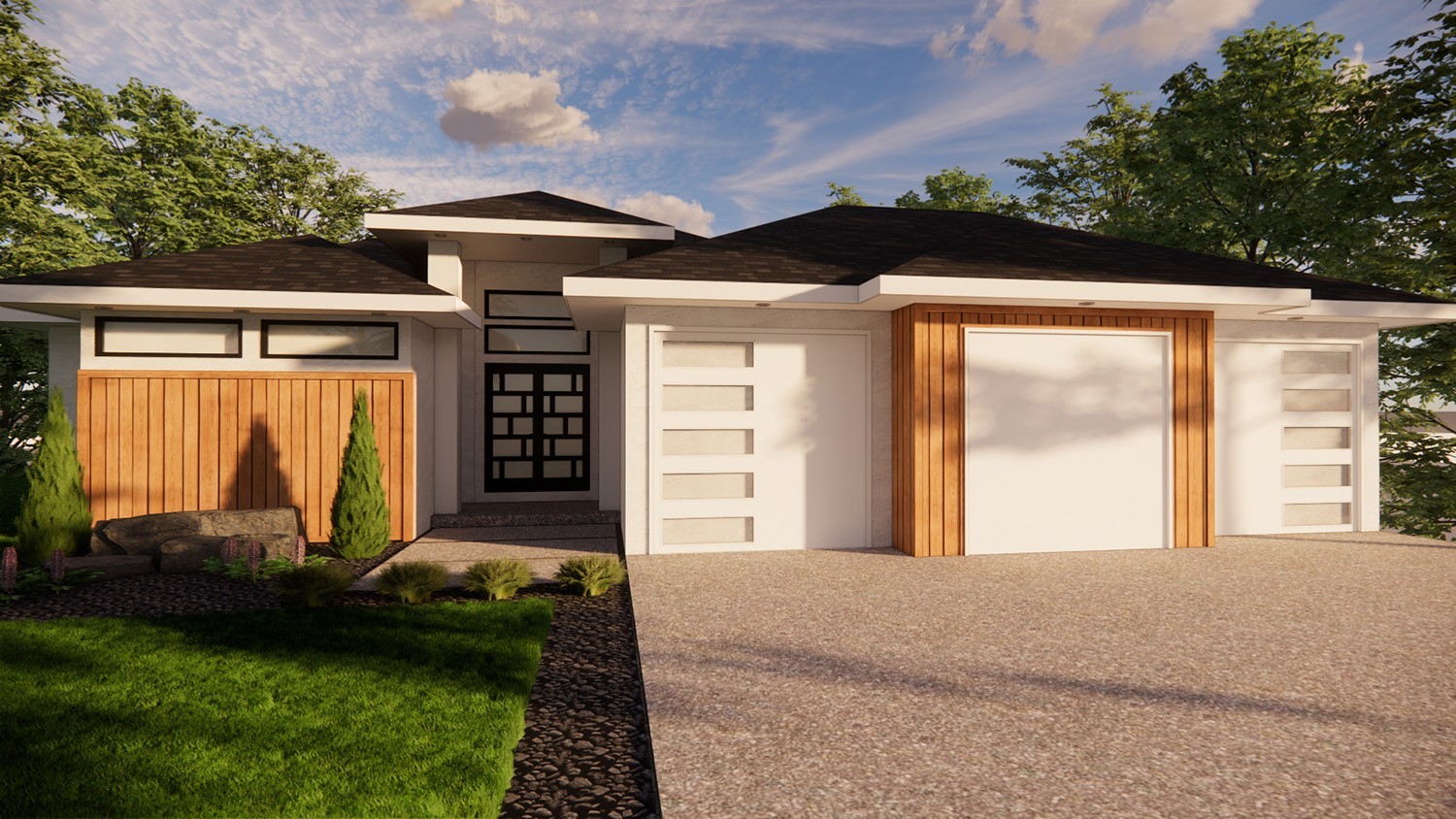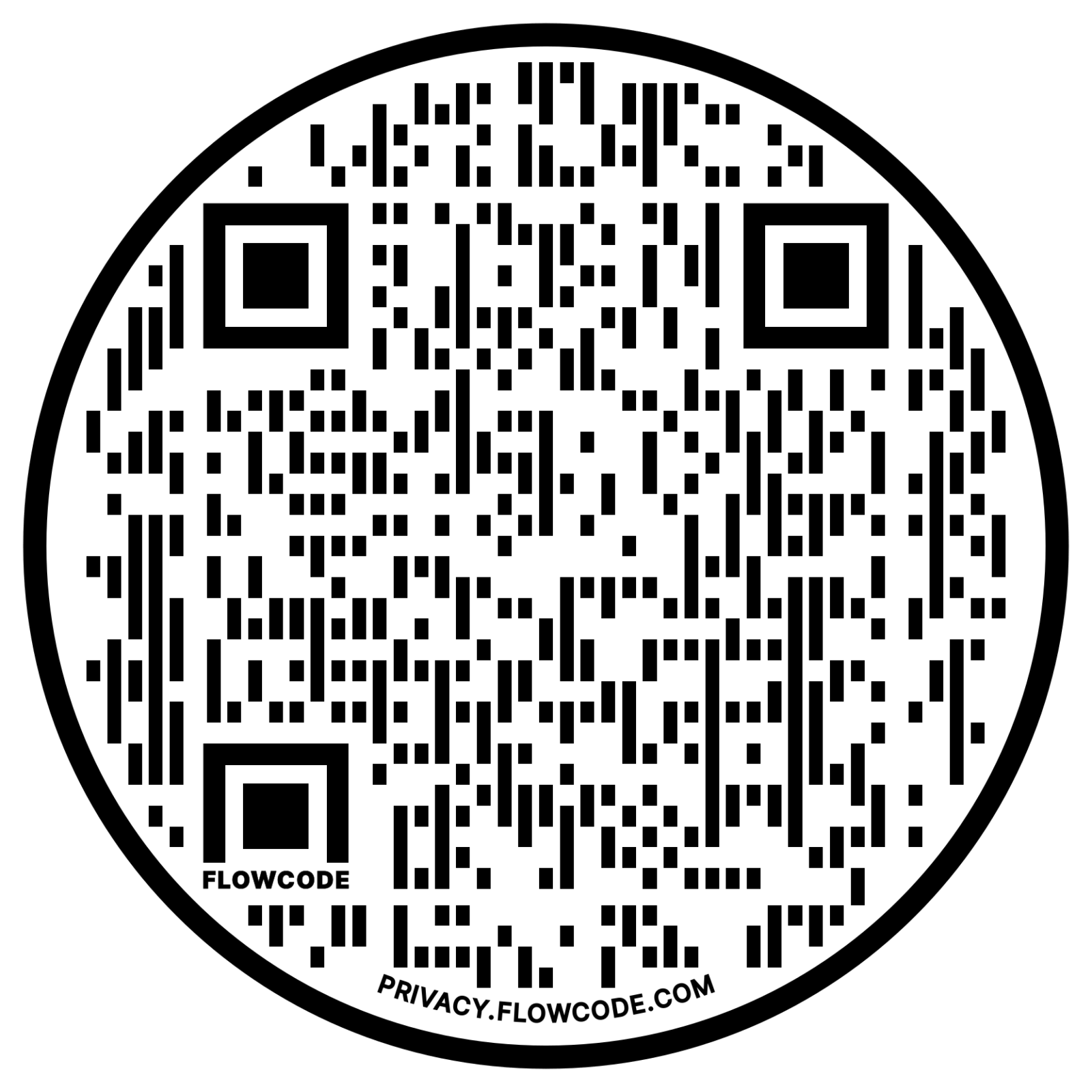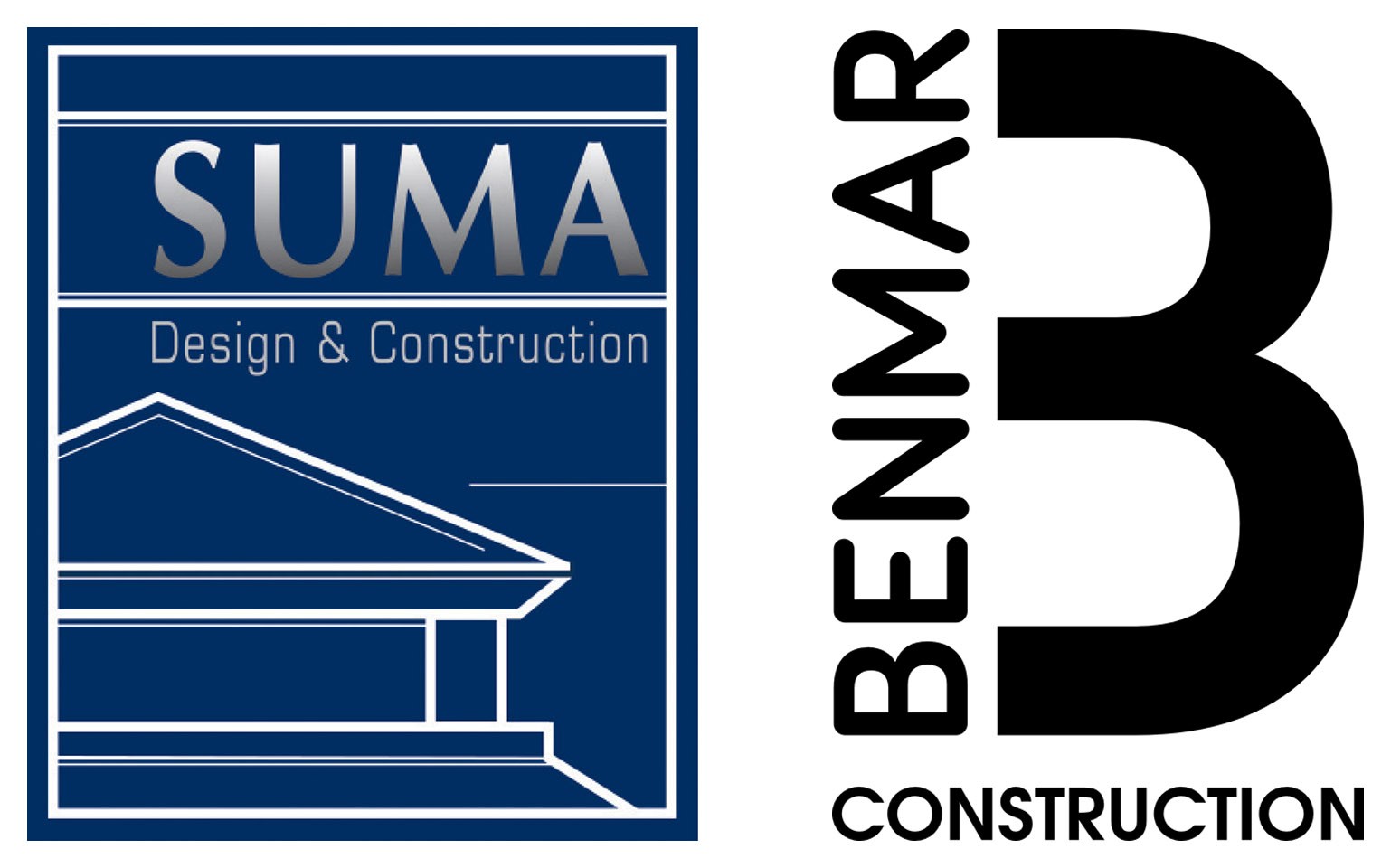Builders: Mark Sumada & Ben Sumada
816.532.1555 | SumaDesignInc.com
Story by Ann Butenas | Sponsored Content
Imagine experiencing an immersive, three-dimensional walk-through of a home that is not even built yet. Virtual reality (VR) technology has enjoyed a bit of prominence lately in the home design and construction process. It can be applied as part of presenting a home design and all of its intended architectural and design elements. As many builders know, it can be somewhat of a challenge to convince clients as to what the final product will look like. With this new VR technology, however, the tide is turning, and taking a home from concept to completion is becoming more exciting and engaging.
The award-winning Suma Design & Construction has a long-standing and respected reputation in the home building industry for its modern styles and clean lines. President Mark Sumada’s forty-plus years of experience in the home building industry have given him first-hand knowledge of every phase of construction. Suma Design’s second generation, Ben Sumada, follows in his father’s footsteps to continue this tradition of providing quality homes. From a very young age, Ben has been at his father’s side at job sites, learning each step of the building process. In 2015, Ben established his own building company, Benmar Construction, using the designs and the vision inspired by his dad’s company. Together, they continue to stand at the leading edge of the home construction industry. Through the use of VR technology, Mark and Ben have greatly elevated the home building experience for their clients, and the response of the clients has been highly favorable.
“The VR technology we currently have is a computer program we started using four years ago, but we initially just used it to design houses with,” noted Ben. “Now, it has evolved for us to show clients in virtual reality what their new home will look like before it is even built.”
What is greatly impressive about using this type of VR technology is that the builder can change elements, designs, details, and styles all on the fly, changing the color of a room, for example, or trying a different type of cabinetry or countertop material. They can expand rooms, add rooms, change the exterior of the home, and even show clients how the simple placement of a couch or pool table will enhance a room. The options are seemingly endless.
“This gives the client an idea of what their new home will look like, as not everyone can easily visualize the end result like builders and architects can,” explained Mark. “When you can change something right before their very eyes, it makes a huge difference. They can truly get a feel for the home from the inside out, including all of the design criteria.”
The Virtual Reality Experience in Action
Mark and Ben recently used this exciting new 3-D VR technology to begin work on a home for a client. Using one of their current models, they transformed the house with this technology to recreate its footprint and overall design style for the client’s needs and desires.
“VR allowed us to take the clients on a walk-through of the home before we even began construction,” indicated Ben, who noted the home will be built in Mission Oaks Estates and has its foundation in their Santa Claire R3 design, but with a more modern upgrade. “We re-created this floorplan by redesigning it to meet their criteria and created a 3-D walk-through for them before construction even began.”
“This virtual reality technology is also beneficial to the sub-contractors, as it allows them to see exactly what a client wants versus just a sketch on paper,” said Mark. “We can put it up on a big screen television and give them a 360° tour around the house, taking them upstairs and downstairs, as well as walk them around the exterior of the home and through the front door so they can get a good feel for all of the spaces. It changes the entire feel and perspective of the house so they have a better understanding of what the final product will look and feel like.”
The exciting part about this type of technology is that it continues to evolve to bring even more benefits to the client and builder.
“The next step is to get VR goggles so the client can see inside their house and walk around inside simply by moving their head,” said Ben. “We are starting to use VR for all of our new build jobs so clients can see a house we haven’t even built yet or so they can preview a previous one that we have since sold and then cannot walk through. We can also record those walk-throughs and send them to the client.”
“The clients just love this,” expressed Mark. “VR takes out the guesswork that is associated with just a set of floorplans on the table. It is a really useful tool.”

